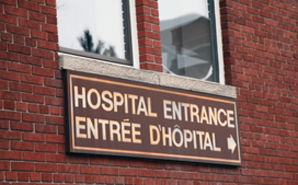Over the years I’ve learned a few things. While working as a nurse in a particular unit is fairly straight forward across hospital systems, the type of hospital can make quite the impact on your job.
When job seeking, whether a new nurse landing their first job, or the seasoned nurse looking for a change, it helps to be aware of some important distinctions and differences between the small rural hospitals and the large, sometimes massive, urban hospitals.
As a general rule rural is non-teaching and urban is a teaching hospital, but keep in mind, these are just general observations. I’m sure there are plenty of exceptions.
Level of care
- Rural: most of your illnesses come through the doors. The rural hospital can sometimes be the first step when specialized care is needed, depending on the severity of illness.
- Urban: this is where the sicker patients go for specialized care. The higher level of care can also depend on the ‘trauma level’ of the emergency care center. Level 1 is the highest level of care.
Echelon of physicians
- Rural: usually have a primary physician only.
- Urban: have a long echelon of physicians as well as physicians in training. You could have a medical student, PA students, NP students, Pharmacy students, physician residents (years 1-4 or more), physician fellows, and ultimately the practicing attending physician. It’s sometimes difficult to understand the hierarchy.
Naughty or nice
- Rural: In my experience, for some strange reason, a lot of physicians can have quite the G.O.D. complex (my apologies to any physicians reading this). They can do no wrong, are always right, and nurses are their servants to some degree. The nurse is there to carry out orders, and nothing else.
- Urban: while the level of care is elevated, the relationship between physician and nurse is copacetic and respectful. In fact, the nurse is valued as a qualified and sought after team member. Dare I say, the physicians in training and students usually learn quite a bit from the staff nurse.
On-call page
- Rural: this can be a catch-all. Either the hospital has taken advantage of the hospitalist program with one team caring for the in-patients, or you will have to search and find the patient’s PCP. Which can be different for every single patient.
- Urban: in most cases the medical student may take some call (with direct supervision by the resident), but mostly it’s the physician resident who takes call. Very rarely you speak with the fellow or attending physician.
Resources
- Rural: budgets drive the majority of available resources. Most of the specialty resources, or more advanced equipment is absent. In fact many pieces of equipment can be quite ‘dated’ if you know what I mean. Health care is a business.
- Urban: with most teaching hospitals you have an abundance (if that is even possible). Most hospitals have the advanced technology, some more cutting-edge than others. A lot of revenue is tied into research these days (in my humble opinion).
As a staff nurse working in these two worlds, you’ll find the degree of difficulty is not cut and dry. Just because the sicker patients are in the urban setting, does not mean it’s ‘easier’ to care for the patients in the rural settings. Remember, the resources are sometimes not available, and when a patient decompensates, learning to improvise can be your greatest asset.
Anyone care to add to the list?


















